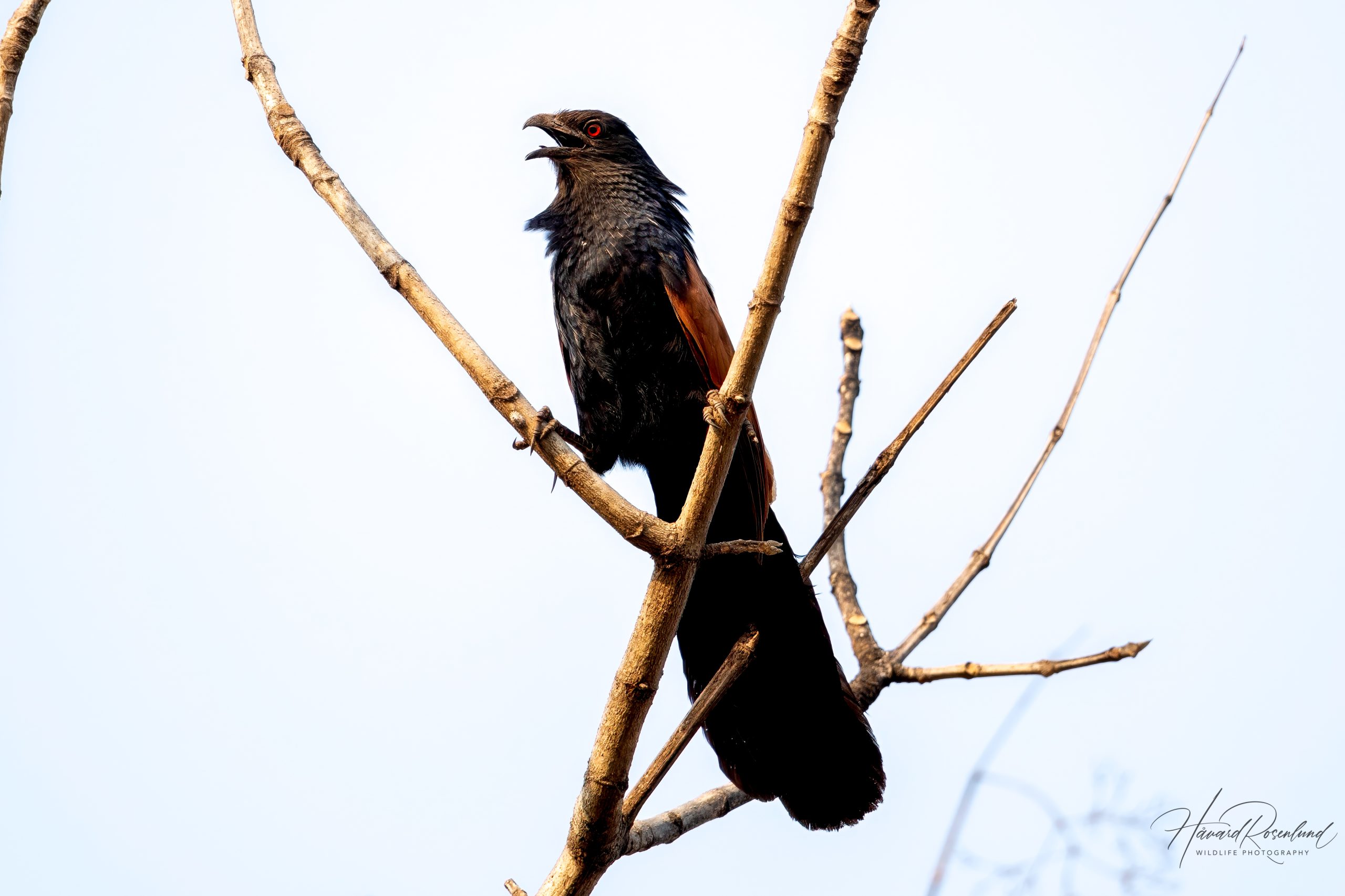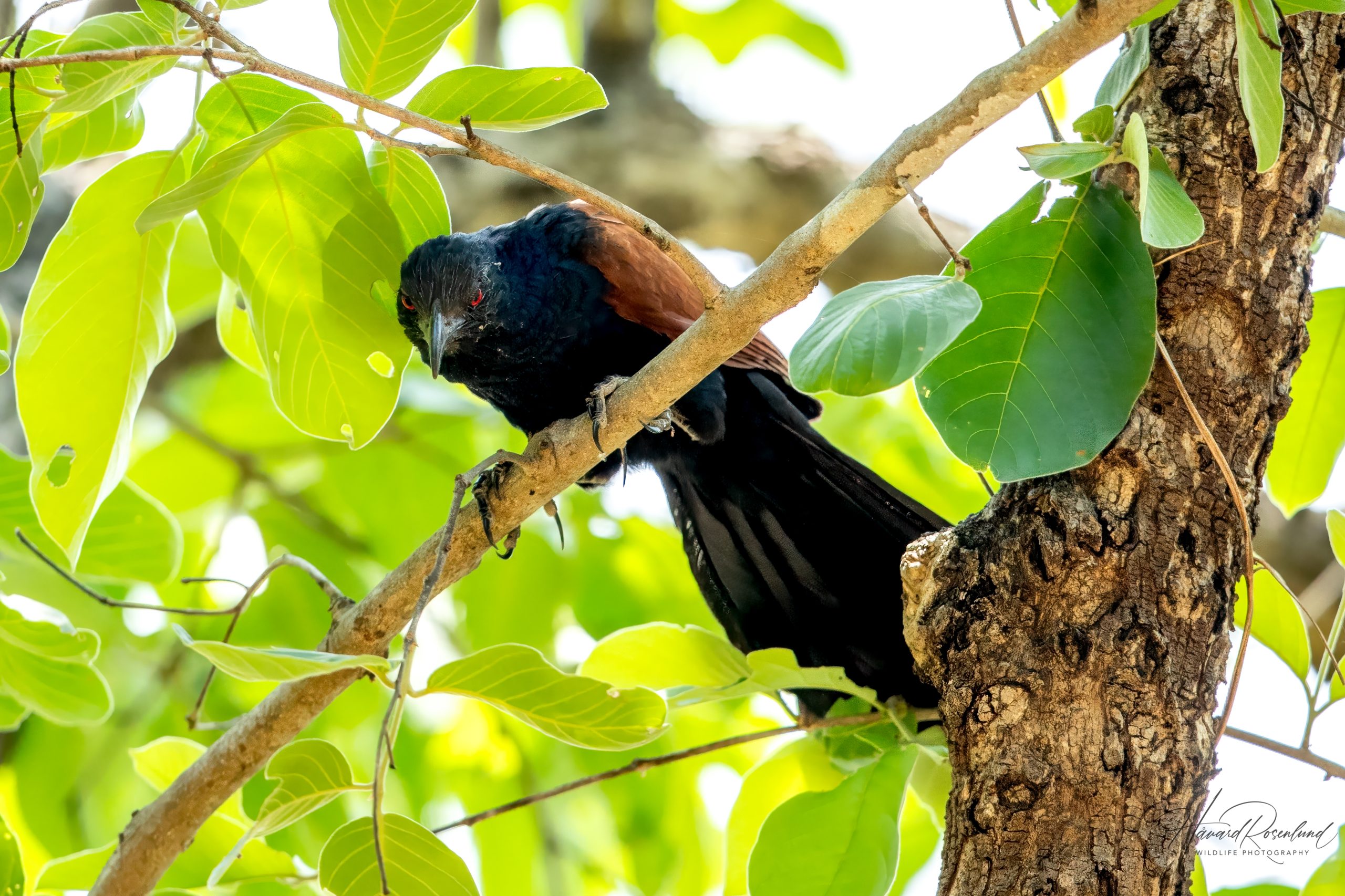Description
The greater coucal (Centropus sinensis) is a large non-parasitic member of the cuckoo family found throughout the Indian subcontinent and Southeast Asia. This species can be identified by its robust size, with adults measuring between 48 to 55 cm (19 to 22 inches) in length, and possessing a long, broad tail and stout bill. The coucal’s plumage is striking, with a combination of glossy black for the head, neck, and underparts, and rich chestnut for the wings and back. It is similar in appearance to the lesser coucal (Centropus bengalensis), but the greater coucal is a lot larger and has a longer bill.
Diet & habitat
The Greater Coucal is typically found in a variety of habitats including dense grasslands, scrublands, agricultural areas, and forest edges. It prefers areas with thick undergrowth where it can forage and nest. This bird’s diet is quite diverse, comprising insects, small vertebrates like lizards and frogs, and even the eggs and nestlings of other birds. It is also known to feed on fruits and seeds occasionally.
It is a ground forager, often seen stalking through the underbrush with a slow, deliberate gait as it searches for prey. Its strong bill allows it to handle a variety of food items, from cracking open tough insect exoskeletons to tearing flesh from small vertebrates.
Nesting
The breeding season of the greater coucal varies geographically but generally spans from February to September, with peak nesting activity occurring in the wetter months when food is abundant. They are known for their unique nesting behavior, constructing large, spherical nests made from grass and leaves, typically positioned in dense shrubbery or low trees. Both male and female greater coucals participate in nest building. The female lays a clutch of 3 to 5 eggs, which are white or pale cream in color. Incubation, primarily undertaken by the female, lasts about 15 to 18 days. Both parents are involved in feeding the chicks, which fledge approximately 20 to 25 days after hatching. The young are capable of climbing shortly after leaving the nest, even before they are fully flight-capable.
Status
The greater coucal is listed as least concern on the IUCN Red List due to its wide distribution and relatively stable population. However, habitat loss and degradation, especially in rapidly urbanizing regions, pose ongoing threats to local populations. Additionally, they are sometimes persecuted due to cultural superstitions and their tendency to raid poultry.









